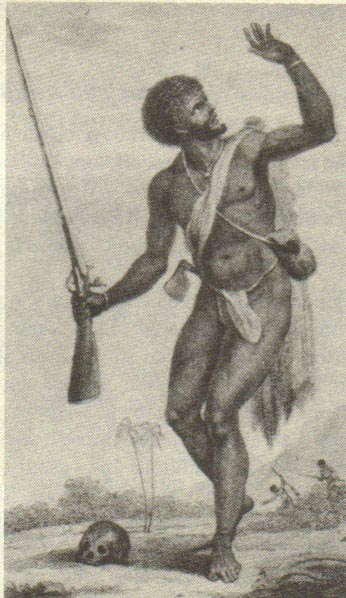Excerpts taken from:
"Black Indians-A Hidden Heritage"
By: William Loren Katz
"Maroons"
At the Congress of Angostura in 1819, liberator Simon Bolivar was elected president of Venezuela and planned a strategy that would free the Americas of European domination. He also found it necessary to clarify America’s racial heritage: “”It is impossible to say to which human family we belong. The lager part of the Native population has disappeared, Europeans have mixed with the Indians and the Negroes, and Negroes have mixed with the Indians. We were all born of one mother America, though our fathers had different origins, and we all have differently colored skins. This dissimilarity is of the greatest significance.”
The 1920s estimate that a third of African Americans have Indian blood requires new research. Today just about every African-American family tree has an Indian branch. The number of Afro-Americans with an Indian ancestor was once estimated at about one third of the total. In Latin America the percentage is much higher. This means that an important page in history has been missing. Three great races - red, white, and black - built the Americas together. Their contributions and their interrelationships have filled libraries with scholarly studies, history texts, and novels.
Two
parallel institutions joined to create Black Indians; the seizure and mistreatment
of Indians and their lands and the enslavement of Africans. In their conquest
of the New World, Europeans were determined to use both dark
peoples. “Ten whites are not enough to watch one Negro,” said a
Portuguese slave master living in Brazil in 1735. To protect slavery and prevent
resistance, Europeans developed brutal methods of control and degrading racial
policies. Another reason for eliminating Indians was to prevent their alliance
with

Black Indians are defined as people who have a dual ancestry or black people who have lived for some time with Native Americans. When slaves escaped to the woods and joined or began remote communities, they are called by the Spanish term maroons. “If you know I have a history, you will respect me,” a Black Indian student told a conference of New York teachers two decades ago. On the snowy night of March 5, 1770, Crispus Attucks a Black Natick Indian, stepped dramatically into U. S. history in Boston.
If they had been of a mind to, Europeans
might have learned something from the dark people they selfishly
used. Instead, they gathered these people’s precious gifts and offered
promises in return. Africans and Indians followed a tradition
that rarely wrote matters down, but held to verbal promises. They
met Europeans who wrote many, many things down but failed to keep to their
promises or treaties. Europe marched out its best
To prevent Africans and Native Americans
from uniting, Europeans played skillfully on racial differences
and ethnic rivalries. They kept the pot of animosity boiling. Whites turned
Indians into slavehunters and slaveowners, and Africans into “Indian-fighters.”
Light-skinned Africans were pitted against dark-skinned, free
against enslaved, Black Indians against “pure” Africans or “pure”
Indians.Thomas Jefferson, speaking of Indians, said “We would
never stop pursuing them with war while one remained on the face
of the earth.” Andre Jackson, the first great democrat to reach the White
House, was first in a long line of candidates to win the presidency
boasting of his Indian-fighting skills. He waged a cruel war against
Indian men, women, and children. He staunchly defended slavery and, like Jefferson,
owned slaves. To save their families, Black Indians had to fight
off posses and armies launched by these national heroes.
Less than two generations after Columbus first
landed in 1492, and while his son Diego served as governor of
Hispaniola, a Spanish-controlled island in the Caribbean, a colony was started
on the mainland of South Carolina. In June 1526, Lucas Vasquez
de Ayllon, a wealthy Spanish official in the city of Santo Domingo
on Hispaniola, founded a colony at or near the mouth of the Pee Dee River
in eastern South Carolina.